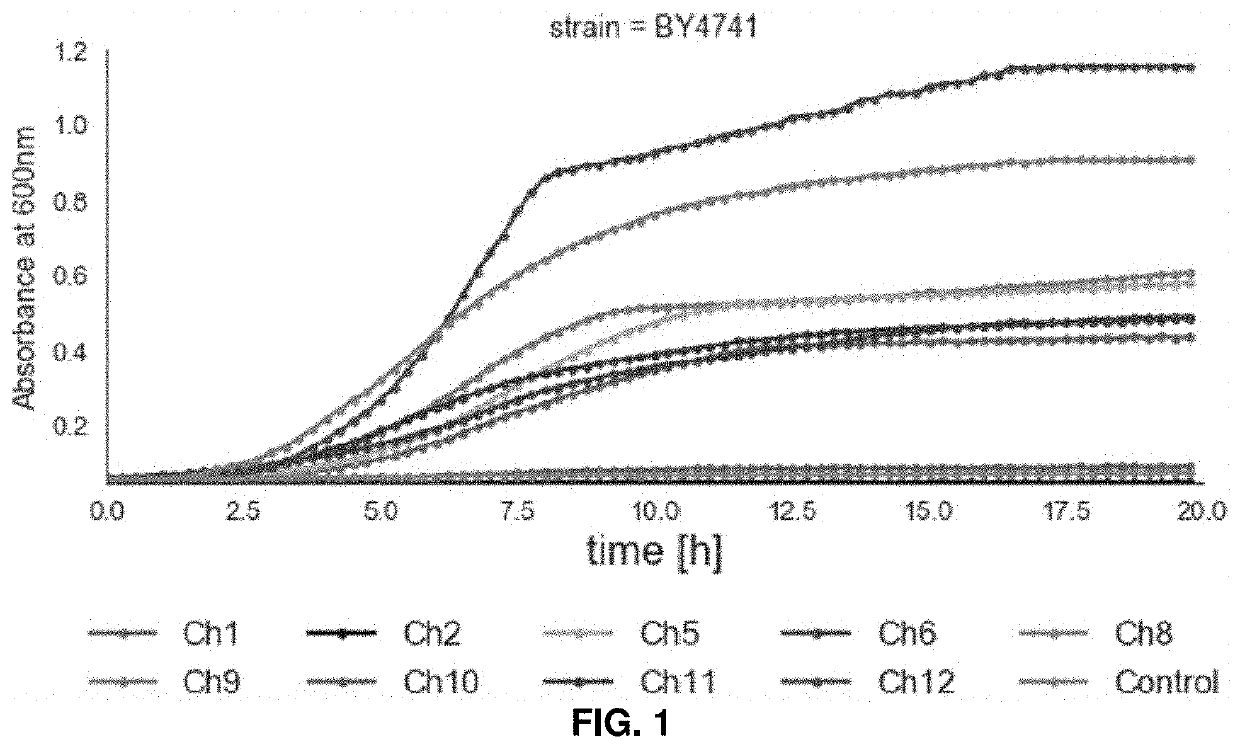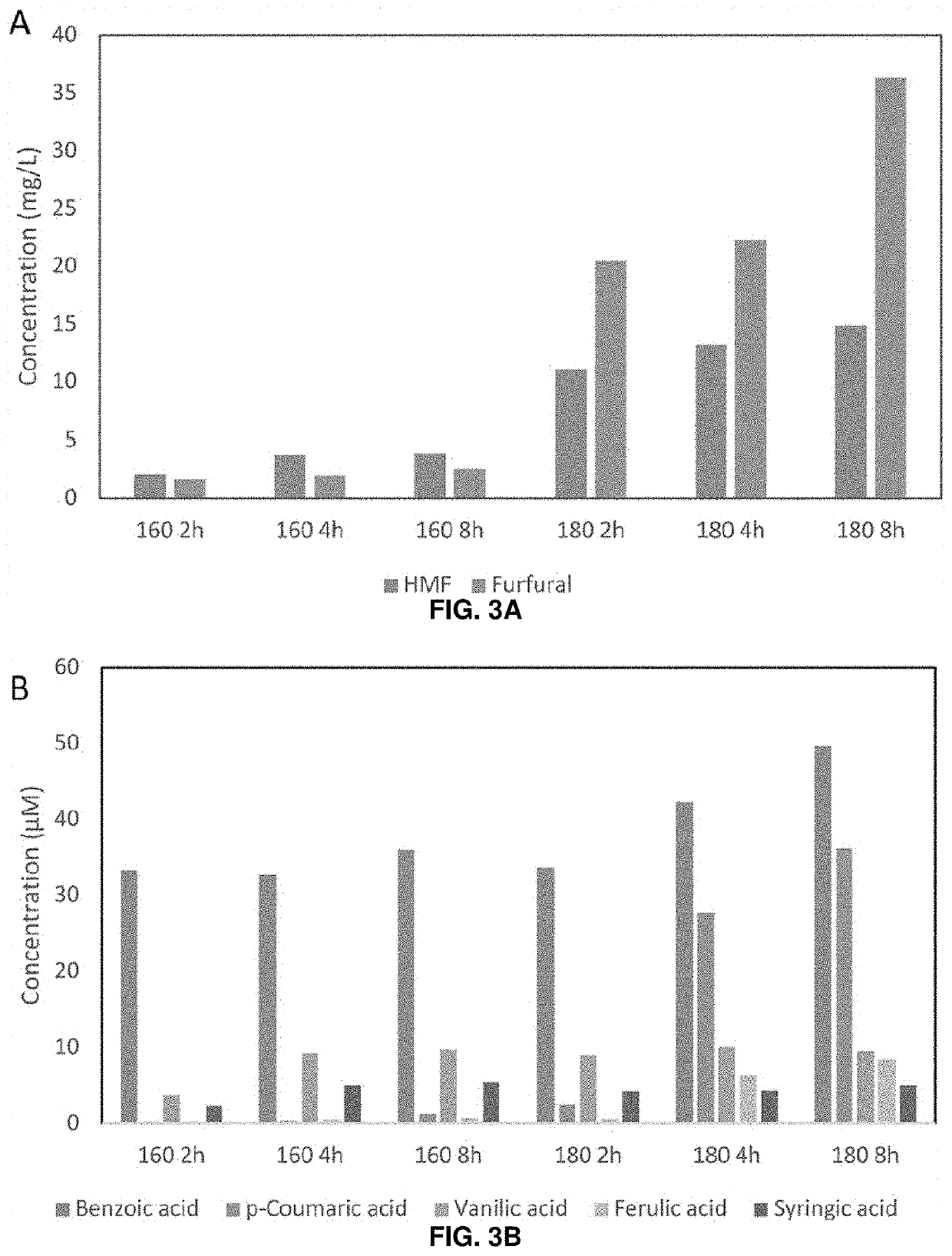Use of renewable deep eutectic solvents in a one-pot process for a biomass
- Summary
- Abstract
- Description
- Claims
- Application Information
AI Technical Summary
Benefits of technology
Problems solved by technology
Method used
Image
Examples
example 1
Biocompatible Choline-Based Deep Eutectic Solvents Enable One-Pot Production of Cellulosic Ethanol
[0048]Previous configurations of biomass conversion technologies based on the use of ionic liquids (ILs) suffer from problems such as high operating costs and large amounts of water used. There have been recent efforts toward process intensification and integration to realize a one-pot approach for biofuel production using certain ILs, but these typically still require pH adjustment and / or dilution after pretreatment and before saccharification and fermentation. Deep eutectic solvents (DESs) were investigated as an alternative to ILs to address these challenges, and the results obtained suggest that certain DESs are compatible with hydrolytic enzymes and common biofuel producing microorganisms such as Saccharomyces cerevisiae. Among the DESs investigated, choline chloride / glycerol (Ch12) achieved the highest rates of lignin extraction and pretreatment efficiency in terms of sugar yields...
PUM
| Property | Measurement | Unit |
|---|---|---|
| Fraction | aaaaa | aaaaa |
| Fraction | aaaaa | aaaaa |
| Molar ratio | aaaaa | aaaaa |
Abstract
Description
Claims
Application Information
 Login to View More
Login to View More - R&D
- Intellectual Property
- Life Sciences
- Materials
- Tech Scout
- Unparalleled Data Quality
- Higher Quality Content
- 60% Fewer Hallucinations
Browse by: Latest US Patents, China's latest patents, Technical Efficacy Thesaurus, Application Domain, Technology Topic, Popular Technical Reports.
© 2025 PatSnap. All rights reserved.Legal|Privacy policy|Modern Slavery Act Transparency Statement|Sitemap|About US| Contact US: help@patsnap.com



